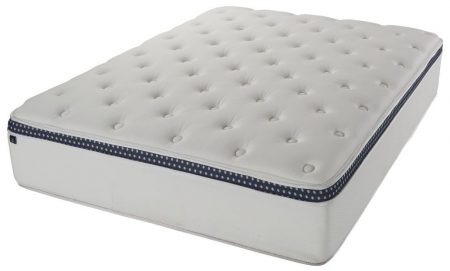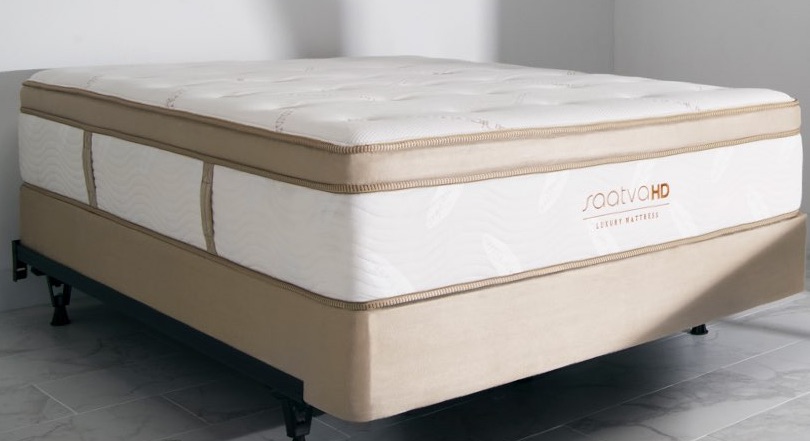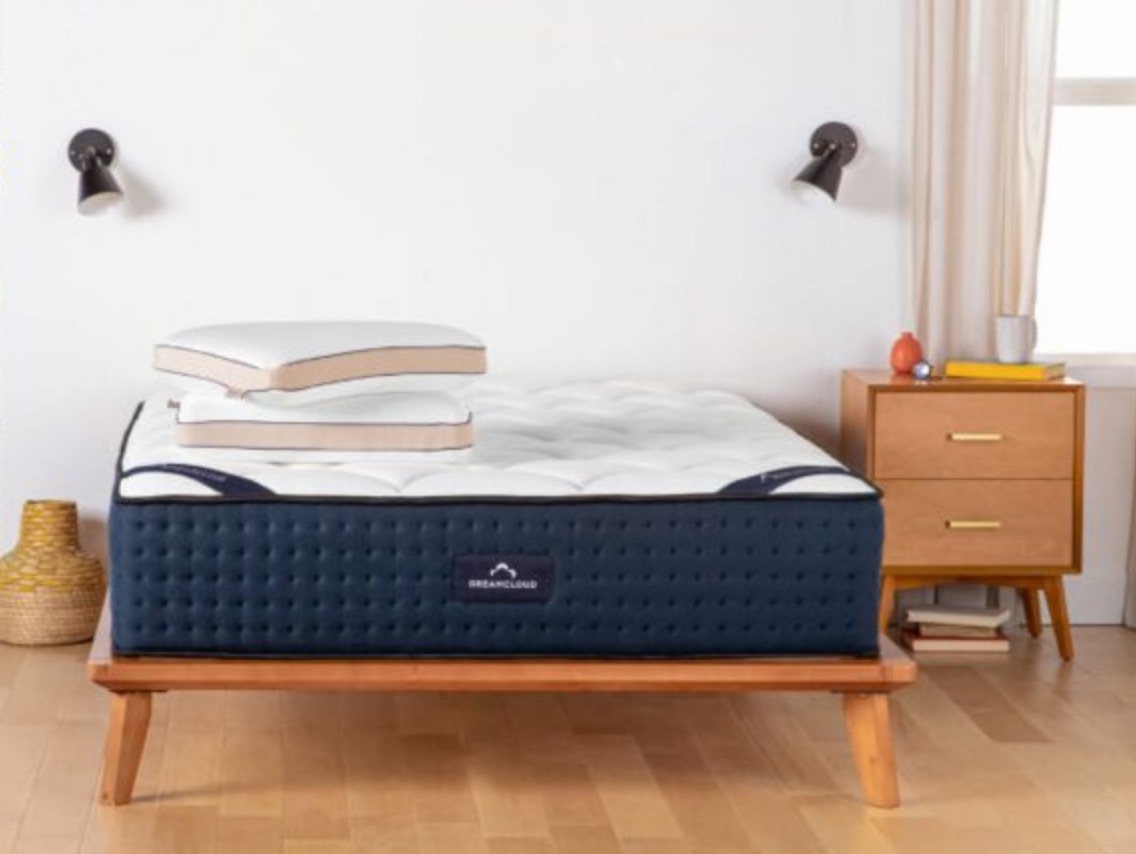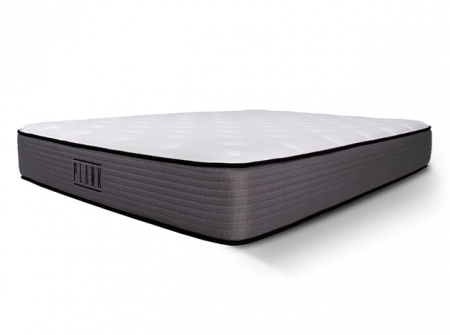Mattress Types for Larger People
Below, we review the common qualities and characteristics found in the five most commonly sold mattress types: innerspring, foam, hybrid, latex, and airbed.
Top Innerspring Mattresses for Heavy Sleepers
Mattress Reviews
Saatva Mattress Review
Innerspring mattresses include a steel coil support core, sandwiched between a base polyfoam layer and at least 1 layer of foam. The gauge, or thickness, of steel coils used in innersprings can help shoppers determine how supportive the mattress will be. Gauge is expressed in numerals, and typically ranges from 12 (thickest) to 18 (thinnest). Thicker, or lower-gauge, coils last longer and provide firmer support, making them the better choice for heavier sleepers.
Innerspring mattresses also rate well among heavyset sleepers for their superior temperature regulation and edge support. The innerspring coil support core promotes airflow, and the mattress will sleep cool as long as the comfort layers feature temperature-regulating foams and cover materials. The uniform coil grid, reinforced by a strong perimeter, also ensures steady support throughout the mattress surface.
As for drawbacks, innerspring mattresses have shorter lifespans than other mattress types, only remaining supportive for about 5 to 6 years.
Top Foam Mattresses for Heavy Sleepers
Mattress Reviews
Nectar Mattress Review
Mattress Reviews
Plank Mattress Review
Foam mattresses are made entirely of foam, with high-density polyfoam making up the base and at least 1 layer of polyfoam or memory foam in the comfort layers. Generally, these mattresses fall on the softer side, which makes them unsuitable for heavier sleepers who require a firmer feel. There are exceptions to the rule, though, like the Nectar mattress. The Nectar is able to support heavier sleepers, thanks to high-density foams in its support core.
Foam density is used to determine how much weight the mattress can sufficiently support, and is measured in pounds per cubic foot (PCF). Density is also related to overall mattress durability. Polyfoam and memory foam each fall into the same three density categories, although the measurements for each differ. The table below provides a detailed breakdown.
To ensure the long-term supportiveness and durability of their mattress, heavier sleepers should seek out mattresses featuring higher-density foams. It’s important to note that many mattress manufacturers do not openly disclose foam density specifications, but this information is generally available to those who contact customer service representatives online or over the phone.
Memory foam mattresses are also known for their high conforming ability, referring to the “hugging” sensation these mattresses provide. Hot sleepers can find high levels of conforming uncomfortable, while others appreciate it for its pressure-relieving qualities.
Top Hybrid Mattresses for Heavy Sleepers
Mattress Reviews
Titan Mattress Review
Mattress Reviews
WinkBeds Mattress Reviews
Hybrid mattresses feature a base polyfoam layer, pocketed coils in the support core, and at least 2 inches of memory foam, latex, polyfoam, and/or microcoils in the comfort layers.
Hybrid mattresses are popular among heavier sleepers for a number of reasons. These mattresses tend to contain multiple layers, resulting in a thicker profile bed, anywhere from 10” to 16”. Because they leverage coils as a support system, they usually regulate temperature fairly well, especially if the comfort layers feature more breathable foams and materials. Finally, the individual pocket coils combine with foam comfort layers to provide a small amount of conforming, stabilized by dense support.
Potential drawbacks to hybrid mattresses include their shorter lifespans and higher price tags. Hybrid mattresses use pocketed coils in the support core, which tend to be higher-gauge and therefore less durable. They also tend to be one of the more mattress types, costing between $1,500 to $2,000 for a Queen.
Latex mattresses use latex or high-density polyfoam in the support layer, with at least 1 layer of latex in the comfort layer. Latex mattresses are favored for their durability. These mattresses last 8 years or longer. They also tend to sleep very cool, so long as they’re all-latex models and made entirely of organic and natural latex. Latex mattresses made of Dunlop latex, as opposed to Talalay latex, are often preferred by heavy sleepers for their denser feel.
For heavy sleepers, the downsides to latex mattresses include their minimal edge support and higher costs. Cooler latex models, such as those containing all organic foams, can cost as much as $2,000 on average.
Airbed mattresses use air for their support core, with a base of adjustable air chambers the sleeper can adjust using a remote or manual levers. The comfort layers will include one or two layers of memory foam or polyfoam. These beds tend to have thicker profiles and good edge support. They also offer sleepers adjustable firmness.
However, it takes some finagling to find the right firmness level for you, and it’s important to keep the mattress properly maintained (with regular replacing of parts) in order to ensure they stay sufficiently supportive for heavier body weights.
Other Considerations for Heavier Sleepers
In addition to qualities of the mattress itself, here are a few more factors for heavier people to consider when shopping for a new mattress.






